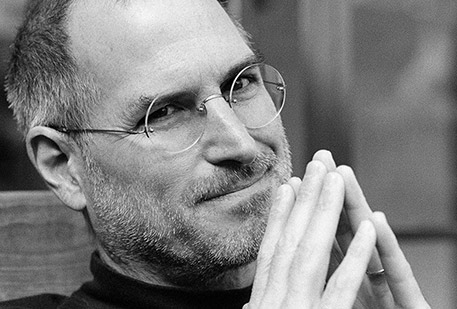HR 2020: we need data scientists now
Over the years, many articles have been written about what’s wrong with Human Resources. The usual challenges emerge: HR is too process oriented; HR is not commercially savvy enough; HR doesn’t think in numbers or data terms; HR has issues truly demonstrating the value of what they do.
Some of this may be true, but having worked in and around HR for over 25 years now, I find it a difficult profession that is once again going through a lot of change. The fact that all managers regard themselves HR experts — when they want to be — doesn’t help the situation.
Business has evolved from the archaic infrastructure of subjectivity and guesswork to an analytically metric-based system covering virtually the whole organization from finance, sales, and marketing through to distribution. HR, however, has failed to fully adapt and communicate its continued relevance.
HR decisions were traditionally intuitive, grounded in relationships, and driven by skills frameworks, on-boarding, and retention objectives supported by knowledge sharing. However, consumers, customers, and employees are all pushing HR into justifying its decision making and predicting the future outcomes of decisions. In the ever-changing marketplace with an increasing demand for talent, getting the right number of people with the right skills in the right place at the right time to deliver outcomes in line with organizational strategies has become paramount. At the same time, HR is expected to find ways to engage, balance flexibility and cost, attract, grow, and predict the churn rate of employees. And that’s why the role of HR is so challenging.
The emerging shift requires a new type of HR practitioner to meet the demands of both today and HR 2020. The change has to be both tangible and transformational, or HR will be left behind in the digital world.
2020: The future is hereThe year is 2020. The world of work has been digitally transformed by embedded artificial intelligence systems. We collaborate and deliver services through social media, with new forms of automation arriving all the time. The workplace is predominantly remote, no longer defined by a smart glass designed building or office. Low-level skilled jobs have mainly been replaced by machines. Outsourcing and collaboration are at an all-time high, with human optimization capabilities driven by data analytics. HR has evolved into a real-time Performance function with the old Finance function and is an extended arm of the executive board with data metrics and return on investment driving people-based decisions and programs.
In each business area, the new Performance function is able to aggregate and forecast overall retention trends and propensity to stay or leave the organization, as well as to predict intention to leave and retention risk per employee, all based on the factors that determine whether an employee is still impressionable or is at the point of no return, leaving despite any intervention. Managers get automated real-time updates of potential retention risks depending on such analytics of the employee as gender, engagement level, social networking content and activity, capability profiles, skills gaps, skill utilization, challenge, and frequency.
The manager is equipped to discuss and explore intentions and concerns with their employees, knowing whether they are impressionable or at the point of no return. Performance management has been replaced by ad hoc conversations, and managers have true accountability for compensation based on demonstrated performance. No more can HR be blamed for their policies blocking pay raises and bonuses.
Every employee has their own ROI. The world has changed with technology being the enabler, but to get to that point, HR has changed significantly in terms of its commercial outlook, the capabilities it requires to operate, and its ability has to provide real-time people-based insights totally oriented towards improving the bottom line.
Outcomes and considerationsToday's HR leaders are very aware of the importance of being strategic and their need to influence top management on people issues. Yesterday's HR was more operational and reactive, giving rise to crisis-based management and often agreeing to unreasonable or low-priority requests that add limited value to the organization, given the time and resource cost involved.
The new HR has to command the attention of the CEO and the C-Suite by working smarter and demonstrating specific behaviours aligned to the CEO’s key business criteria and to drive more measurable ROI.
- Breakthrough thinking
With their more scientific stance, HR leaders will be more confident to confer with CEOs and their team to give commercial-related advice and be directly accountable for business-critical people initiatives and their implementation. Predictive analytics will allow HR to demonstrate value by developing forecasts and spot potential problem areas that can keep organizational surprises to a minimum. The art of HR remains crucial to help make sense of what all the data are saying.
- The commercial adviser
Predictive analytics allow HR to anticipate problem areas and provide solutions before the CEO and their top teams ask questions, thus positioning HR leaders in a way that makes them look valuable and attractive. These could include:
- Readiness: If a crisis in the organization required an immediate response, does HR have a strategy or team equipped for this? It is imperative that HR, as a team of trusted experts, be ready at short notice to respond with impact. HR that can anticipate crises before they happen has a very valuable attribute at their disposal.
- Reputation: No matter what the potential capabilities of HR are, if they lack quality, the CEO will quickly dismiss their potential impact. Therefore, HR must build a reputation of quality in everything associated with it, from advice to reports, with a keen eye for detail.
- Data: HR must acquire and use intuitive people-based systems with metrics with a clear relationship and linkages to what is important to the commercial side of the organization and its key stakeholder, the CEO.
- HR as a brand
HR can have great initiatives, solutions, and science, but these will be wasted if HR is not perceived as a credible function. Implementing simple perception and visibility marketing techniques can ensure that HR is noticed:
- Perception: HR must demonstrate what, how, and why it has delivered certain outcomes, linking them back into critical business performance indicators.
- Visibility: Being proactive and visibly volunteering to provide results and insights is key to marketing HR’s credibility and value. This enables case studies and external market-facing insights to demonstrate the impact HR has had due to the application of business-related insights and analytics. It will also build and manage HR’s external brand.
HR is in a race against time. Many HR functions continue to be downsized or outsourced at the very time when the opportunity to really show value is here. It is crucial that HR align itself with the key stakeholders across the organization and speak their commercial language. To do this, HR must quantify its output in tangible commercially-oriented ways that are intrinsically linked into what is important to the executive board and the organization, with a keen focus on the future and how that impacts and drives the present. HR has to be more scientific, looking for data and making sense of it rather than relying on the old “trust me I’m in HR”: It didn’t work in the past and it certainly won’t work in the future.
Data breed confidence in decisions and the ability to persuade and influence people to HR's way of thinking through a business case approach. If it were easy, HR would have done it years ago, and it certainly is a significant mind-set change, but one that will really enable HR to operate at a different level. While HR 2020 is only a few years away, HR needs to start making changes now.
Reprinted with the permission of Dave Millner, Executive Consulting Partner, Workforce Science and Analytics, Smarter Workforce IBM. [email protected]. Follow him on https://twitter.com/HRCurator
 CA-EN
CA-EN UK
UK AU
AU US
US NZ
NZ PH
PH ZA
ZA SG
SG HK
HK


